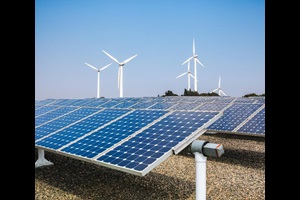- Energy Technologies
- Energy Technologies
- Mergers Acquisitions
- Wind Turbines
- Wind Turbine Blades
Wind Turbine Blade Strategy: Building In-House or Out?

The continuing cascade of merger and acquisition (M&A) activity in the wind sector has primarily centered on a few high profile wind turbine OEMs, but it has also been accompanied by a few blade manufacturer acquisitions. Wind turbine OEMs are continually revaluating whether to build blades in-house, outsource them, or juggle a careful blend of the two sourcing strategies. There has been a trend over the past few years toward more outsourcing arrangements. However, two recent acquisitions of independent blade manufacturers are raising the question of whether the trend toward more outsourcing is slowing.
The largest of the deals was in October, when US industrial conglomerate GE inked a $1.65 billion contract to acquire LM Wind Power, the world’s largest independent wind blade manufacturer. LM’s annual blade manufacturing capacity is estimated by Guidehouse at around 6,300 MW. A much smaller deal announced in November saw German turbine OEM Senvion acquiring European blade design and manufacturing company Euros for an undisclosed cash sum.
Reversing Course?
So is the era of blade outsourcing reversing? In short, no. Instead, it is a continued validation of the “make and buy” sourcing that balances both in-house manufacturing with outsourcing. Over the past few years, wind turbine companies have increasingly gone down this path because it brings the advantages of both sourcing options instead of being wedded to the limitations of one. Having in-house capacity guarantees supply and ensures that increasingly sophisticated blades are designed and manufactured strictly to the wind turbine OEM’s needs. Outsourcing can give turbine vendors more flexibility in using globally located independent manufacturers while avoiding the need to build new factories to serve all global markets.
GE bringing blade production in-house does not refute or reverse the trend toward outsourcing. Rather, it rebalances GE’s previous 100% outsourcing to an OEM that can make and buy. It still plans to source from the independent vendors—although inevitably at lower rates now that it can satisfy in-house needs from LM under its ownership. Senvion already chose a route of make & buy, and the Euros acquisition just brings more expertise in-house at a time when sophisticated large blade rotors are so important to turbine design.
Furthermore, there has been well-reasoned speculation that GE’s LM acquisition may have been a preemptive defensive move to prevent Siemens—which has been on its own M&A spree —from acquiring LM. Siemens has and still produces all blades 100% in-house, but the company’s acquisition of Gamesa, which makes and buys, may have ignited a new interest in acquiring more blade production capabilities and options. Having more options and controlling interests in more companies would provide more solutions to the complicated blade sourcing strategy of the larger merged company as Siemens/Gamesa turbine designs and technologies are increasingly harmonized.
A Significant Market
Blades are costly and increasingly strategically important parts of the wind turbine supply chain. Blade costs are typically around 22%-24% of the overall cost of the wind turbine, or between $90,000 to $140,000 per blade, depending on size, materials, and other particulars, according Guidehouse’s recent Wind Turbine Blade Technology & Supply Chain Assessment report. The global wind blade market is significant, with between $6.6 billion and $7.7 billion in revenue expected annually from 2016 to 2025.
Going forward, there likely will still be some shake-ups among turbine OEMs and blade and other subcomponent suppliers, and some strategic moves may be made to in-source previous outsourcing. In general, however, wind turbine OEMs are expected to continue on a trajectory of blending in-house production with cost-effective flexible outsourcing.